#base structure done now time for additional rooms and the massive tree in the center lets goooo
Explore tagged Tumblr posts
Text
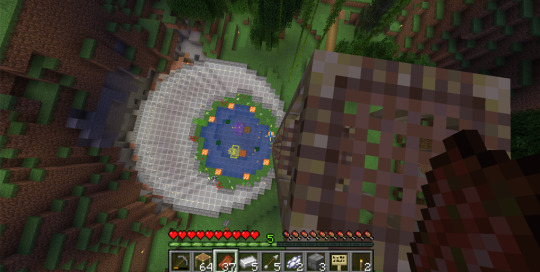
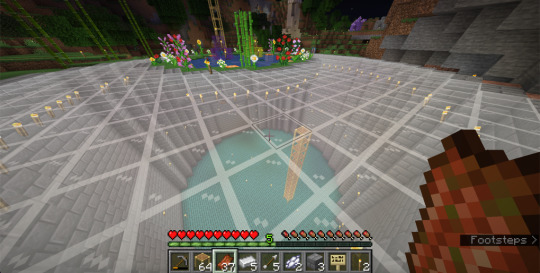
two days of grinding mc with @duckachu
#literally mine a chunk type beat holy crap#it took forever#base structure done now time for additional rooms and the massive tree in the center lets goooo#we love happycraft#and yes its happycraft#reject modernity (name smp) and embrace tradition (namecraft)
19 notes
·
View notes
Text
Magnificent Scoundrels- Seat of the Citadel
One last faction intro story, in which Shepard finally tells the Council what every Mass Effect player has ever wanted to tell them. Unless someone specifically requests otherwise, or it is needed later, I won’t have any more “faction intros” as I’ve been writing them. Next up is the meeting of the different governments. As usual, I own none of these characters. Enjoy the story.
(A note on timelines: This takes place slightly more than halfway through the events of Mass Effect 2)
Mass Effect Galaxy
The Citadel, Capital of the Citadel Council
The Citadel. The beating heart of galactic power. A glimmering jewel of elegance and culture. An utterly massive 45 kilometer long space station, constructed by the long-extinct and highly advanced Prothean race, it was the capital of the aptly named Citadel Council, the galaxy spanning federation that ruled most of explored space.
Discovered by the Asari in the human year 580 B.C.E., it had since remained the center of galactic power. Open, airy, and utterly magnificent, it was a menagerie of elegant futuristic-style architecture and open water features. Its beauty was unmatched by any other place in the galaxy; not the often conflicting human architecture of Earth, nor the sweeping elegance of Thessia, nor the simplistic, yet sturdy nature of the Turian or Salarian homeworlds. Truly, it was a place unlike any other.
Commander John Shepard sat in an elaborate waiting room at the base of the Citadel Tower, the large structure that housed the chambers of the Council itself. Above was an artificial sky of brilliant blue. Blossoming cherry trees were dotted around the large room in large pots, their blossoms adding to the Beautiful fountains trickled slowly, the sound of running water meant to calm and soothe visitors. Shepard was anything but calm. In fact, he was, to put it rather mildly, pissed off.
The Council had done absolutely nothing in the two years while he had been dead. He warned them of the coming of the genocidal synthetic race known as the Reapers, but, no, they apparently preferred the illusion of safety and calm instead of shoring up defenses and preparing for a war that was almost certainly coming. Goddamn bureaucrats.
Now, it was even worse. There were nine new galaxies out there, and all of them had it together. He shuddered as he remembered reading the briefings and documents provided by his various new colleagues. Council will probably want to ignore that, too. Goddamn bureaucrats, he repeated to himself. And what did the Council do? Invited them all over as if they were all newly discovered species. As if they were peoples who newly discovered space flight, expected to be cowed by the might of the Council, instead of pan-galactic empires.
Goddamn bureaucrats.
“John. God to see you.” Shepard looked up sharply as someone called his name. He visibly relaxed when he saw who it was.
Captain, now Councillor, David Anderson walked towards Shepard, a smile on his face. Dark skin, a flat nose, and short cut hair highlighted an elegant but simple suit; the clothing of a Councillor. Anderson was Shepard’s mentor, old captain, and still older friend. Still more, he was the only of four Councillors that Shepard fully trusted.
“It’s good to see you too, Anderson,” said Shepard, rising from his seat to shake his hand. Anderson made a ‘follow me’ gesture, and the two started to walk through the extensive lobby.
“The information you sent me was quite helpful,” remarked Anderson. Shepard rubbed the back of his neck, a nervous tick he’d picked up from somewhere.
“Ah. Yes. Well, my new colleagues are a bit… bizarre,” Wasn’t that the understatement of the century? Really weird and slightly insane would probably be better. “But, they are quite helpful.” Especially if you want something very, very dead. Anderson nodded in response.
“I’m sure.” He glanced around the room, noting several Salarians hovering near a doorway. “But the walls here have ears. All part of the political game,” he sighed. “Let’s take this conversation to my office.” Shepard couldn’t agree more.
Anderson’s office was, again, simple yet elegant, as a Councillor’s office should be. Smooth walls and a large window, overlooking the Presidium, highlighted a maple desk. Sitting on top of the desk, next to endless reports, was a single picture of Anderson wearing dress blues on his naval graduation day. Anderson slid into the chair (with wheels, of course; humans in this galaxy weren't savages) and gestured for Shepard to take a seat opposite him.
“Some of this data is, to put it bluntly, quite concerning,” opened Anderson without preamble. He touched a button on his desk, and a hologram sprang to life, displaying three symbols: a blue triangle with a minimalized rocket taking off on it, a black and white six-spoked circle, and a double-headed golden eagle. Of course we’d start with those three. “These three in particular. Tell me about them.” He glanced at a data pad. “The, uh, Interstellar Manufacturing Corporation, who sound a lot like if the Alliance was ruled by Cerberus, and the Galactic Empire and Imperium of Man, who,” this was accompanied by a slightly incredulous chuckle, “Sound like some nightmare governments from a bad movie.” Shepard rubbed the back of his neck again.
“...yeah. Sure. I… how should I even start,” he rubbed his neck again, “The IMC is what you think would happen if a super-corporation gained enough power to rule humanity, the Galactic Empire took power after a Galactic Republic kinda lost a horrible war.” He still wasn’t 100% sure about the politics from that particular galaxy. He shrugged, then continued. “But, uh, both of those governments are on the decline. Their opposite, more freedom-loving numbers have recently beat them back. It’s the third one that’s the problem.” Anderson shot him a look that clearly said ‘explain’. “You see… well, how should I put this…” He frowned as he considered what to say. “The Imperium of Man makes Terra Firma look violently pro-alien.” Terra Firma was the System Alliance's resident human supremacist group. Often compared to the Nazis of old, they were uncouth, brutal, and, above all, close minded. Anderson’s eyebrows shot up at this comment. Shepard rubbed his neck once more. “Yeah. No slurs or racial barbs for these guys.” Shepard leaned in closer to Anderson to get his point across. “One of their mottos is, and I quote, ‘Suffer not the alien to live’.” Anderson cradled his head in his arms.
“Oh, God. And we invited them to the upcoming first contact talks.”
“Yep!” replied Shepard with slightly more relish than was actually necessary. It would be a real shame if xenocidal zealots murdered the Council (maybe), but perhaps it would be a good thing if they shook things up a little. Certainly, if Cain was anything to go by, they weren’t all bad.
“How are the other three going to react to all of this?” moaned Anderson, head still in his arms.
“Not quite sure,” replied Shepard, “Although, this time, it’s all politics, so the illustrious Commander Shepard isn’t going to be able to save their collective asses, like I’ve done the last five or six times.” His face took on a pensive look. “Although, maybe this will actually get them to listen about the Reapers…” Anderson and Shepard’s thoughts were broken by a blue-skinned Asari, who politely knocked.
“Excuse me, Councillor Anderson. The Council is ready to see Commander Shepard,” said the Asari. Anderson sighed and slowly shook his head.
“Well, duty calls. This ought to be interesting.”
The Council chambers were much like the rest of the Citadel: utterly beautiful with a simple and refined elegance. Too bad such a wonderful room was squandered on the walking wastes of oxygen that were the Council. At least, that was Shepard’s opinion. He didn’t have much liking for politicians, and most definitely had no liking for these three in particular. He looked up at the podium where the Councillors stood. At least they bothered to meet in person this time.
There were three Councillors, excluding Anderson, each from a different species. The Asari, a graceful, elegant monogendered race of blue-skinned women, the Salarians, a short lived but extremely intelligent race of amphibians, and the Turians, a militaristic race descended from avians. Humanity was the most recent addition to the Council, a move that many seem to resent, but thanks to Commander John Shepard saving the Citadel and the Council it housed, a move that no one could oppose.
“Commander Shepard,” began Sparatus, the Turian Councillor. “While we appreciate being given information about these new galaxies,” this was inflicted by a measure of sarcasm, “Some of this seems quite hard to believe.” ‘Just like the Reapers’ remained unsaid, but everyone was thinking it. Shepard sighed inwardly. It’s going to be one of these meetings.
“Yes. You went off on your own, chasing some message, and just sent this data back. Explain yourself,” said Tevos, the Asari Councillor. Anderson looked like he was about to intervene on Shepard’s behalf, but was interrupted.
“Some of this seems highly unlikely. First you come up with Reapers, a race of immortal sentient machines hell-bent on killing us all, now this!” intoned Valern, the Salarian Councillor. Shepard struggled to keep a straight face.
Calm down! said one part of his mind. Explain to them what’s happening out there! Tell them what you’ve seen. Getting angry will get you nowhere.
Or will it? asked another part. They didn’t listen about the Reapers, despite being attacked by one, they didn’t listen about your involvement with Cerberus, preferring to label you a terrorist. They haven’t listened to you about anything. Maybe anger will help you! Besides, continued to voice, it's not like you couldn’t find similar employment elsewhere. The Scoundrels trust you more than these idiots ever have. I’m sure there are plenty of people who would pay top dollar for someone like you.
“You know what? I’m sick of this bullshit,” said Shepard. “I am goddamn sick and tired of this bullshit. You can believe whatever you want to believe, despite evidence to the contrary. I have never lied to you. I saved your lives. I saved the Citadel. I died for you!” he thundered. The Councillors seemed rather taken aback. “Yes, still, you don’t heed my warnings! You don’t follow my advice, even though I have not once lied to any of you. You sit, on your comfy chairs, trying to keep a peace that will most definitely be shattered. You do nothing because it is simply more convenient to ignore reality,” he hissed, words dripping with venom. Spartacus bristled.
“How dare you-” Shepard whirled around to face him.
“Shut. The fuck up, Sparatus.” The calm in Shepard’s voice was deadly. The Councilors blanched. No one’s ever talked to them like that before, I’d guess. He would have laughed if he wasn’t in mid-rant. “Apparently, what I gave you was good enough to invite all of these governments over for peace talks. All of them. You also apparently trusted myself and my new colleagues enough to give them these invitations, instead of contacting these governments directly.” Which was probably a wise move, in the long run, considering some of the reactions would have been ‘piss off and die’ if the invitations weren’t hand delivered by galaxy wide heroes. Were they invitations? Or… treaties? What was a document inviting someone to a peace talk called? Shepard shook himself out of his tangent and continued.
“Also, it seems you trust eight unknown people more than you trust the Spectre who has never lied, saved your lives, and died for you. Have I missed anything?” he spun around to the room, arms outstretched theatrically.
“Fine then, Shepard,” said Valern. “You are dismissed. Apparently,” he threw the word back in Shperad’s face, “Our top intelligence gatherer isn’t loyal to us anymore. Other Spectres or the STG can take care of finding out what we need to know.” Tevos and Sparatus looked apprehensive at their colleagues's dismissal. While they might have been bureaucrats, they knew Shepard was one of the best Spectres and intelligence agents they had. Shepard gave a laugh; a full throated hearty laugh.
“Oh, yeah. Have fun with that. Have fucking fun with that. Have fucking fun sending the STG or some lone-wolf Spectre against people who have entire armies of super-soldiers at their disposal and who can legally destroy planets*. Have fucking fun.” He sneered. “This is now the intelligence game you’re playing. You aren’t in complete control anymore.” Shepard crossed his arms and looked up at the Council. “So, only one question remains: do you want my help or not? ‘Cause if you don’t, there isn’t much point in me staying, is there?” There it was: the ultimatum was out. Would they back down and realize that Shepard was their best shot, or would they allow their emotions to get in the way? Honestly, it could probably go either way. Spartacus shot a look at Anderson. Anderson replied with a ‘hey, not my problem’ stare. Tevos cleared her throat.
“It seems we have been remiss, Spectre Shepard.” Shepard let out a breath he had been silently holding. While he would have made good on his threat, this was his home galaxy, and he wasn’t particularly sure he wanted to be working for someone like Crossgrow or the Inquisition. “As you are the only one who has had contact with these people, please give us your opinion on how we should handle this situation.” Shepard was sure it had probably physically hurt the Council to say that. He dismissed the thought and returned to his duty.
“First thing first: you have to present a united front. You can’t disagree with each other. Second, all of the species’ representatives should be here.” Before anyone could make an objection, he continued. “All of them. Definitely the client races.” The Council had four races as members, but many more that were under their jurisdiction and not full members. Many of those races were trying (and, for the most part, failing) to get a seat on the Council itself. It wouldn’t do if the more open minded government, such as the Federation or GA, came to the Citadel, then saw the Council treating other races as less than equals. “Even some of the other races who aren’t officially part of the Council, if you think you can control them.” Shepard paced the floor.
“In addition, you should probably beef up the Citadel fleet. Send in more ships. Turian, Asari, Alliance, I don’t care. We need as much security as possible, and some of these governments will be impressed by shows of force.”
“Yes… we shall think about this,” replied Tevos. “Your input will be helpful. Please stay on the station during the talks.” Shepard nodded, then came to a realization. Oh, hell. The first meeting of all of these governments is only slightly more than a week away. This was going to be interesting. Or deadly. One of the two.
*ONI can call on Spartans, ISB has Death troopers, and the Inquisition has the Grey Knights and the Deathwatch. In addition, ISB helped to create the Death Star and has sway over Imperial Navy battlegroups, enough to bombard a planet into uninhabitable-ness, and the Inquisition can enact Exterminatus. Shepard and the rest of the Scoundrels would know about all of this, except for the Grey Knights.
#magnificent scoundrels#stroy#my story#writing#my writing#crossover#fanfic#mass effect#mass effect 2
11 notes
·
View notes
Text
Audemars Piguet Lashes Out

A new museum and workshop is completed, and a new hotel is on the way.

The main room of the new Musée Atelier Audemars Piguet in Le Brassus, Switzerland. © Samuel Zeller for The New York Times
LE BRASSUS, Switzerland — The new Musée Atelier Audemars Piguet, a glass and steel pavilion scheduled to open to the public on June 26, stands on a grassy knoll between the company’s two 19th-century buildings here — something like a bridge between its past and future.
“We did have a small museum here but we had in mind to build an extension to present the richness of our watchmaking culture,” Jasmine Audemars, chairwoman of the family-owned company’s board of directors, said during a media preview of the museum in February. “We wanted a structure that would be integrated into the landscape with unobstructed views of the valley so that visitors could experience our heritage.” Bjarke Ingels, the Danish architect who designed the new building, had his own view: “We had to tread carefully because this was like bringing an annoying newcomer between two friends.” But then Mr. Ingels — whose disruptive thinking on architecture was the subject of a 2017 episode of “Abstract: The Art of Design,” a Netflix documentary series — has yet to design a typical structure. Since he founded Bjarke Ingels Group (known as BIG) in Copenhagen in 2005, there have been projects like the tent-like Silicon Valley headquarters for Google and the Danish power plant with a slanted roof that doubles as a ski slope. His proposed design for the watch museum, submitted to the brand’s competition in 2013, initially had little chance of success. For one thing, its circular, nearly flat roof violated regional building codes.

The Danish architect Bjarke Ingels in the new Musée Atelier Audemars Piguet. It is scheduled to open to the public June 26. © Samuel Zeller for The New York Times
“Swiss building rules, to say the least, are very strict,” Mr. Ingels said at the preview. “I was told a building here must resemble other buildings, meaning that it must have a double-sided angled roof.” Still, Mr. Ingels managed to win over not just Audemars Piguet, but also the local council, and construction began in March 2017. (“Bjarke’s project was not just out of the ordinary for the vallée, it was out of the ordinary for all of Switzerland,” Ms. Audemars said, referring to the Vallée de Joux in western Switzerland, where Le Brassus is located.) “We weren’t trying to be provocative,” Mr. Ingels said, “we were just tapping into the heritage of the valley without creating a replica of what was already there.” “We aligned ourselves around the concept of an ‘oxymoron,’ a word I had to look up,” he added. “That means combining two things that could seem mutually exclusive at first and creating a new hybrid form. Once the tension settles, something new comes into the world.”
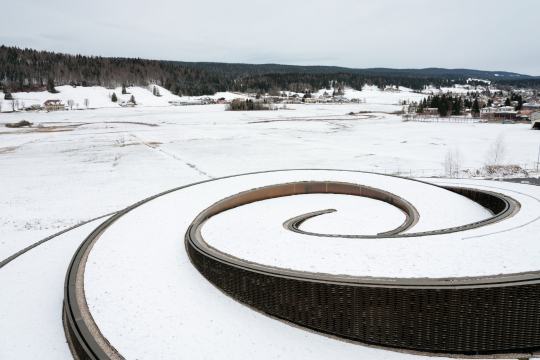
The roof of the new museum, which was meant to resemble a watch spring. © Samuel Zeller for The New York Times
The pavilion’s interior, which totals 2,500 square meters (26,910 square feet), was designed as a coil — deliberately meant to resemble a watch spring. “The spiral felt like an incredibly simple layout where form and content were linked together,” Mr. Ingels said. One part houses a workroom, called the Grandes Complications Atelier, where visitors will be able to look through glass partitions to observe watchmakers at work. The other showcases the brand’s heritage display: 300 timepieces ranging from chiming and astronomical complications to jeweled pocket watches, all mounted inside clear protective domes. And at the center of the spiral: The 1899 Universelle pocket watch — with 21 functions and 13 hands, the most complicated timepiece ever produced by Audemars Piguet.

The centerpiece of the new museum’s display: the 1899 Universelle pocket watch, the most complicated piece that Audemars Piguet ever made. © Samuel Zeller for The New York Times
Many of the vintage pieces formerly were owned by Marcus Margulies, a London-based watch retailer who, watch blogs have said, amassed the world’s best collection of Audemars Piguet watches that he then sold to the company in 2016. Few people outside the Swiss watch world know that most of Audemars Piguet’s vintage pieces are one of a kind because, until 1951, it sold complications to distributors and retailers rather than making its own watches. Initially, “the company was too small, and focused on hand-finishing movements and creating complications,” Michael Friedman, the brand’s head of complications, said at the preview. “It was the powerful retailer’s name that went on the dial.” In addition to the Universelle, a particularly noteworthy exhibit is a rare 1943 chronograph that Audemars Piguet acquired in 2015 at a Phillips auction for 305,000 Swiss francs (now $315,480). In March it reissued the elegant wristwatch, which has a champagne-colored dial, in a 500-piece limited edition with the name [Re]Master 01.

A rare chronograph from 1943. The museum also includes a workroom where visitors will be able to see watches being made. © Samuel Zeller for The New York Times
And visitors — who will be able to reserve the free tours online — also will see a large display dedicated to the Royal Oak, a highly popular, signature model designed in 1971 by Gerald Genta. It spawned the Offshore in 1993 and the Concept in 2002. The pavilion’s structural glass walls were curved to support the steel roof, made of two circular plates totaling 470 tons, which rises from the hillside slope. In February, the roof was covered with snow. In spring, it has a carpet of regional grasses, planted to help control the building’s temperature and to absorb rainfall. A brass mesh runs along the edge of the outer glass walls to regulate light and heat.
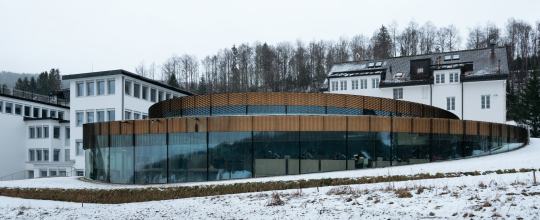
The museum's design “was not just out of the ordinary for the vallée, it was out of the ordinary for all of Switzerland,” said Jasmine Audemars, chairwoman of Audemars Piguet. © Samuel Zeller for The New York Times
“What we have designed here is more like land art than architecture,” Mr. Ingels said. “It looks like the Spiral Jetty of Switzerland.” The reference was to the sculptor Robert Smithson’s “Spiral Jetty,” a massive earthwork in Utah. While the description sounds — and the roof looks — unusual, the building actually does blend well into the surrounding landscape (a bit like I.M. Pei’s Pyramid at the Louvre). Le Brassus is less than 40 miles north of Geneva, but it is an area of farmlands and vineyards, set against the pine tree-speckled peaks of the Jura mountains. Historically, the area’s long, harsh winters kept farmers indoors for months, and by the 1700s they were occupying their inventive minds and nimble fingers with horological invention.

Ms. Audemars at the new museum. “We did have a small museum here but we had in mind to build an extension to present the richness of our watchmaking culture,” she said. © Samuel Zeller for The New York Times
In 1875, two of the village’s enterprising residents, Jules Louis Audemars and Edward Auguste Piguet, founded a watch company specializing in high complications. It was Ms. Audemars’s forebears, like those of the LeCoultres and the Meylans and others, who made this valley an epicenter of Swiss watchmaking. The valley itself also helped. “In the 15th century, iron was found here,” said Sebastian Vivas, historian and museum director at Audemars Piguet, “which was used to make steel, and allowed farmers to make watchmaking tools.” Watch companies from Patek Philippe to Omega have heightened a focus on their archives in recent years, displaying them in headquarters space, social media posts or pop-up exhibitions in a blend of brand awareness, sales enhancement and community building. At Audemars Piguet, however, the museum also is expected to have a significant impact on its hometown, a village of just 1,360 residents where it traditionally has played an outsized role. For years the village has had just two hotels — one of them, a 50-room inn called Hôtel des Horlogers, owned by Audemars Piguet since 2005 and just a short distance from the company complex along the Route de France, the village’s lone main road. But its basic utilities as well as the pine walls and brown leather furniture had become seriously dated over the years, so the building was razed and work began on a new hotel in mid-2018.
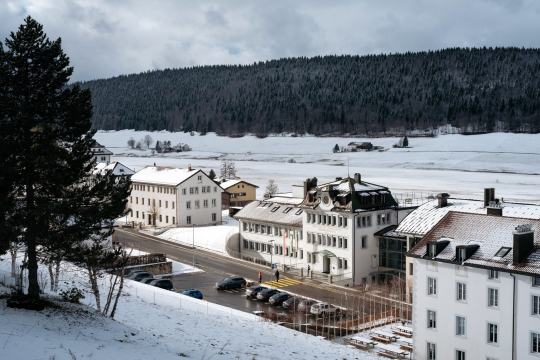
The Audemars Piguet operation in Le Brassus, which is less than 40 miles north of Geneva. The area is filled with farmlands and vineyards, set against the pine tree-speckled peaks of the Jura mountains. © Samuel Zeller for The New York Times
The company will not disclose the cost of building the museum and the hotel, or of some refurbishment that has been done to the 19th century buildings. The new glass and steel version of the hotel, scheduled to open in 2021, will still be called Hôtel des Horlogers and still have 50 rooms. But there the resemblance ends. Also designed by Mr. Ingels’s firm, an architect’s rendering shows the building zigzagging its way along the site, the Audemars Piguet structures in the background. There is little doubt that Mr. Ingels’s architecture will change Le Brassus forever. But has watchmaking changed Mr. Ingels? “I did not wear a watch when I started this project,” Mr. Ingels said. “Now I have this beautiful openwork thing ticking on my wrist.” “Also, I find myself using a lot of watchmaking metaphors.”
[Source]
0 notes